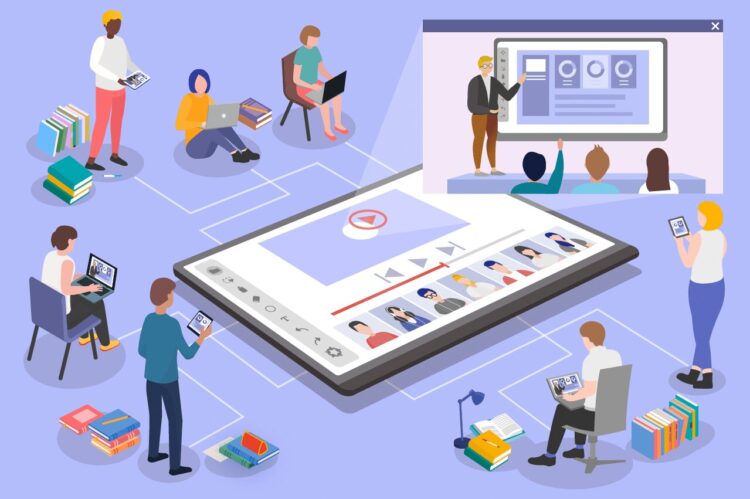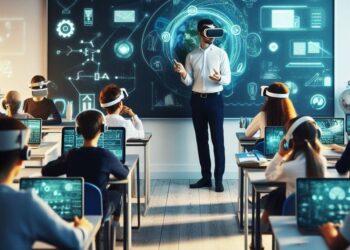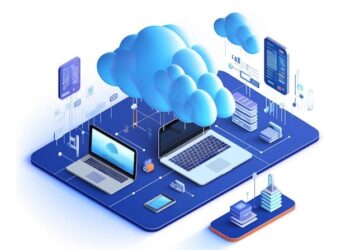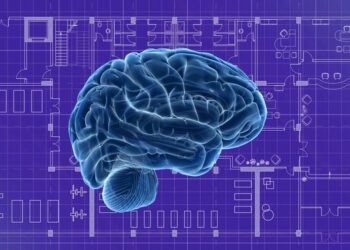The traditional model of education, largely unchanged for centuries, is facing a profound transformation. Accelerated by global events but propelled by technological advancements and evolving pedagogical insights, the rigid boundaries of the physical classroom are dissolving. Emerging as a powerful and flexible solution is the hybrid learning model, an innovative approach that seamlessly blends face-to-face instruction with online learning experiences. This fusion is not merely a temporary fix; it’s redefining what a classroom is, offering unprecedented adaptability, personalization, and accessibility, and fundamentally reshaping the future of education.
The Essence of Hybrid Learning

Hybrid learning, often used interchangeably with “blended learning,” is more than just adding technology to a traditional class. It’s a thoughtful integration of the best elements of both in-person and online instruction, designed to optimize the learning experience. The key lies in strategic course design that leverages the unique strengths of each modality to create a cohesive and effective educational journey.
A. Core Components of a Hybrid Model:
A truly effective hybrid model balances synchronous (real-time) and asynchronous (self-paced) activities across physical and virtual spaces.
- In-Person Instruction: This component retains the invaluable human connection, direct interaction, and immediate feedback that physical classrooms offer. It’s ideal for:
- Interactive Discussions: Fostering deeper engagement, critical thinking, and nuanced debates where non-verbal cues are important.
- Hands-on Activities: Lab work, art projects, group problem-solving, and practical skill development that benefit from physical presence and collaborative tools.
- Direct Instruction and Clarification: Delivering complex concepts, answering immediate questions, and providing personalized attention in a dynamic setting.
- Relationship Building: Cultivating a sense of community, peer support, and strong teacher-student rapport.
- Online Learning: This component leverages digital tools and platforms to provide flexibility, access to diverse resources, and opportunities for self-paced learning. It’s excellent for:
- Content Delivery: Providing access to lectures (pre-recorded videos), readings, multimedia resources, and curated external materials that students can access anytime, anywhere.
- Asynchronous Activities: Allowing students to complete assignments, engage in online discussions, conduct research, and work on projects at their own pace within a set timeframe.
- Personalized Practice: Utilizing adaptive learning platforms and intelligent tutoring systems for individualized drills, quizzes, and skill reinforcement.
- Collaborative Online Tools: Facilitating group projects, peer feedback, and shared document creation even when students are not physically together.
- Seamless Integration: The most crucial element is that the in-person and online components are not separate silos but are intentionally designed to complement and reinforce each other. Learning flows seamlessly between the physical and digital realms, creating a unified educational experience.
B. The Evolution of Blended and Hybrid Learning:
The concept of combining different learning modalities isn’t new, but recent technological advancements have elevated its potential.
- Early Forms (Pre-Digital): Even before computers, educators used a form of “blending” by assigning readings or homework to be completed outside of class, followed by in-class discussions. Correspondence courses also represent an early form of remote learning.
- The Rise of E-Learning (Late 20th Century): The advent of the internet and Learning Management Systems (LMS) like Blackboard and Moodle enabled the delivery of online content, assignments, and discussions. This paved the way for fully online courses.
- Blended Learning’s Emergence (Early 2000s): As e-learning matured, educators began to realize the limitations of purely online or purely in-person models. Blended learning emerged as a way to leverage the strengths of both, often focusing on shifting some direct instruction online to free up classroom time for active learning.
- The Hybrid Model’s Acceleration (Post-2020): Global events necessitated a rapid adoption of remote and hybrid solutions. This period significantly advanced the development of robust tools and pedagogical strategies, moving hybrid learning from an optional innovation to a central pillar of educational design. The emphasis shifted to true integration rather than just combination.
C. Common Hybrid Learning Models:
Various models exist, each with a different emphasis on in-person and online components, allowing for flexibility based on institutional goals, student needs, and available resources.
- Rotation Model: Students rotate on a fixed schedule between different learning modalities, such as online learning, small-group instruction with a teacher, and group projects. This can include:
- Station Rotation: Within a single classroom, students rotate through different learning stations.
- Lab Rotation: Students rotate between a traditional classroom and a computer lab for online learning.
- Flipped Classroom: Students access lecture content online at home (asynchronous) and use class time for discussions, problem-solving, and hands-on activities (in-person, often collaborative).
- Flex Model: Online learning forms the backbone of the student’s learning, but students have flexible, individualized schedules to move through course content. Teachers provide on-demand, in-person support. This is highly student-centered.
- A La Carte Model: Students take some courses entirely online and others entirely in-person. This often happens at the high school level, allowing students to personalize their course load.
- Enriched Virtual Model: This is mostly an online course, but with required face-to-face sessions (e.g., weekly meetings, lab sessions, or intensive seminars). It’s common in higher education.
- Personalized Blended Learning: This model is highly individualized, using technology and data to tailor content, pace, and support to each student’s unique needs, often integrating elements from other models.
Transformative Benefits of Hybrid Education

The adoption of hybrid learning models is driven by a compelling array of benefits that address many of the limitations of traditional educational settings, impacting students, educators, and institutions alike.
A. Enhanced Flexibility and Accessibility:
Hybrid models break down geographical and temporal barriers, making education more accessible to diverse learners.
- Anytime, Anywhere Learning: Students can access online content and complete assignments outside of fixed class hours, accommodating diverse schedules, responsibilities (e.g., part-time jobs), and learning preferences.
- Reaching Underserved Populations: For students in remote areas, those with health challenges, or those needing to balance education with other commitments, hybrid models provide vital access to quality instruction that might otherwise be unavailable.
- Reduced Commute Times/Costs: For higher education, hybrid models can reduce the need for daily commutes, saving students time and money.
- Inclusive Learning Environments: The flexibility can benefit students with varying learning paces or those who thrive in different environments (e.g., quieter online study versus interactive group work).
B. Increased Student Engagement and Ownership:
The blended nature of hybrid learning often leads to more dynamic and student-centered experiences.
- Active Learning Focus: By moving some direct instruction online, valuable in-person class time can be dedicated to interactive activities, discussions, problem-solving, and collaborative projects, fostering deeper engagement.
- Personalized Pacing: Students can review online materials at their own pace, replaying complex lectures or quickly moving through familiar content, which caters to individual learning speeds and reduces frustration.
- Greater Agency and Autonomy: Students take more ownership of their learning journey as they manage their online work and make choices about how and when to engage with content, fostering self-regulation skills.
- Variety and Novelty: The mix of online and offline activities keeps learning fresh and prevents monotony, catering to different learning styles and preferences.
C. Personalized Learning Pathways:
Hybrid models are ideally suited to facilitate truly individualized educational experiences.
- Data-Driven Insights: Online platforms collect rich data on student performance, engagement, and progress. Teachers can use these insights to tailor interventions, recommend specific resources, and adjust learning paths for each student.
- Differentiated Instruction: Educators can assign different online resources or activities to students based on their specific needs, strengths, and weaknesses, ensuring that every student is challenged appropriately.
- Targeted Remediation and Enrichment: Struggling students can access additional online support and practice, while advanced learners can be provided with more challenging content or opportunities for accelerated study.
D. Development of 21st-Century Skills:
Navigating a hybrid learning environment naturally cultivates skills vital for success in the modern world.
- Digital Fluency: Students become proficient in using various digital tools, platforms, and online resources, developing essential digital literacy skills.
- Self-Direction and Time Management: Managing asynchronous work and balancing online and offline tasks builds crucial self-discipline, organization, and time management abilities.
- Collaboration and Communication: Hybrid models often require students to collaborate using online tools, fostering effective digital communication and teamwork skills.
- Critical Thinking and Problem Solving: Engaging with diverse digital content and solving problems in varied formats strengthens critical thinking and analytical abilities.
E. Optimized Use of Resources and Teacher Time:
Hybrid models can lead to more efficient allocation of educational resources.
- Leveraging Technology for Efficiency: Automation of some administrative tasks and content delivery frees up teacher time to focus on high-impact instructional strategies and individualized student support.
- Scalability: Online components allow for larger student numbers to access core content, while in-person time can be used for smaller, targeted group work.
- Flexible Space Utilization: Schools can rethink physical space, creating collaborative zones, quiet study areas, and technology-rich labs that support diverse learning activities.
- Continuous Professional Development: Teachers gain new skills in instructional design for digital environments, data analysis, and online facilitation, enhancing their overall pedagogical toolkit.
Designing and Implementing Effective Hybrid Models
Transitioning to and sustaining successful hybrid learning requires thoughtful planning, investment, and a commitment to continuous improvement. It’s not a plug-and-play solution.
A. Strategic Course Design:
The core of effective hybrid learning lies in intentional and cohesive instructional design.
- Backward Design: Start with clear learning objectives. Determine what students should know and be able to do, then design assessments, and finally, select appropriate online and in-person activities.
- Seamless Integration: Ensure that online and offline activities are purposefully linked and reinforce each other. Avoid simply duplicating content or treating them as separate courses.
- Clear Expectations: Clearly communicate the structure, expectations, technology requirements, and assessment methods for both online and in-person components to students.
- Varying Modalities: Utilize a variety of instructional strategies and content formats (videos, readings, discussions, simulations) to cater to diverse learning styles and maintain engagement.
- Build in Flexibility (Where Appropriate): While structure is important, offer students some choices in pacing or how they demonstrate mastery where feasible.
B. Investing in Technology Infrastructure:
Robust and reliable technology is the backbone of any successful hybrid learning environment.
- Learning Management System (LMS): A central, user-friendly LMS is essential for organizing content, delivering assignments, tracking progress, and facilitating communication.
- Reliable Internet Connectivity: High-speed internet access for both institutions and students (at home) is non-negotiable. This addresses the critical digital divide.
- Appropriate Devices: Ensuring students have access to suitable devices (laptops, tablets) for online learning activities.
- Support for Collaboration and Communication: Utilizing video conferencing tools, online discussion forums, and collaborative document platforms.
- Digital Resources and Tools: Access to a wide range of educational software, interactive simulations, and curated digital content libraries.
C. Comprehensive Professional Development for Educators:
Teachers are key to successful implementation and need ongoing support and training.
- Pedagogical Training: Focus on how to design engaging hybrid lessons, facilitate online discussions, manage flexible learning spaces, and provide effective feedback in blended environments.
- Technological Proficiency: Training on how to effectively use the LMS, various digital tools, and data analytics dashboards.
- Mindset Shift: Supporting teachers in transitioning from traditional lecturers to facilitators, mentors, and instructional designers.
- Collaborative Communities: Fostering professional learning communities where educators can share best practices, troubleshoot challenges, and innovate together.
D. Fostering Student Digital Literacy and Self-Regulation:
Students need to be equipped with the skills and habits to thrive in a hybrid environment.
- Explicit Digital Literacy Instruction: Teaching students how to navigate online platforms, evaluate digital information, practice online etiquette, and maintain cybersecurity.
- Time Management and Organization Skills: Providing strategies and tools to help students manage their independent online work effectively.
- Self-Advocacy: Encouraging students to communicate their needs, ask questions, and seek support when they encounter challenges in the hybrid model.
- Digital Citizenship Education: Emphasizing responsible and ethical online behavior, understanding digital footprints, and respecting intellectual property.
Overcoming Challenges and Looking Ahead
While the benefits are significant, implementing hybrid models at scale presents various challenges that require proactive solutions and continuous adaptation.
A. Bridging the Digital Divide:
Equitable access to technology and reliable internet remains a major hurdle.
- Policy and Funding: Government initiatives and institutional funding are crucial to provide devices, internet hotspots, and infrastructure support to underserved students and communities.
- Community Partnerships: Collaborating with local organizations, libraries, and businesses to provide access points and support.
- Offline Alternatives: Developing low-bandwidth or offline-compatible content for situations where consistent internet access is not guaranteed.
B. Maintaining Student Engagement and Well-being:
The flexibility of hybrid models can sometimes lead to disengagement if not managed effectively.
- Designing for Interaction: Actively designing online components with engaging, interactive elements and ensuring meaningful interactions in person.
- Teacher Presence and Support: Maintaining a strong and supportive teacher presence, both online and offline, through regular check-ins, timely feedback, and empathetic communication.
- Monitoring Student Well-being: Being vigilant about signs of disengagement, digital fatigue, or mental health challenges, and providing appropriate support resources.
C. Ensuring Effective Assessment and Feedback:
Assessing learning in a hybrid environment requires thoughtful strategies to ensure validity and reliability.
- Authentic Assessments: Designing assessments that require students to apply knowledge and skills in real-world contexts, rather than just rote memorization, across both online and in-person settings.
- Formative and Summative Balance: Using a mix of frequent, low-stakes formative assessments (online quizzes, discussion posts) to track progress and provide immediate feedback, alongside more comprehensive summative assessments.
- Leveraging AI for Feedback: Utilizing AI-powered tools for automated grading and personalized feedback for certain types of assignments, freeing up teacher time for qualitative assessments.
D. Teacher Workload and Burnout:
Designing and managing hybrid courses can be demanding for educators.
- Dedicated Planning Time: Providing sufficient time for teachers to design, adapt, and refine hybrid course materials.
- Collaborative Design: Encouraging teams of teachers to collaboratively develop hybrid course modules and share resources.
- Streamlined Tools: Implementing user-friendly technology and providing adequate technical support to minimize teacher frustration.
- Clear Expectations and Boundaries: Establishing clear expectations for teacher availability and workload to prevent burnout.
E. Shifting Institutional Mindsets:
Moving to hybrid models requires a cultural shift within educational institutions.
- Leadership Buy-in: Strong leadership is essential to champion hybrid learning, allocate resources, and support faculty.
- Flexible Policies: Revising policies related to attendance, grading, and course scheduling to accommodate the flexibility of hybrid models.
- Continuous Evaluation: Regularly evaluating the effectiveness of hybrid programs, collecting feedback from students and teachers, and making data-driven adjustments.
Conclusion
The hybrid model is more than a stopgap; it represents a paradigm shift towards an education system that is resilient, adaptable, and profoundly student-centric. By thoughtfully leveraging the strengths of both physical and digital environments, hybrid models are not just redefining classrooms but are building the foundation for a more equitable, engaging, and effective learning future for all.












